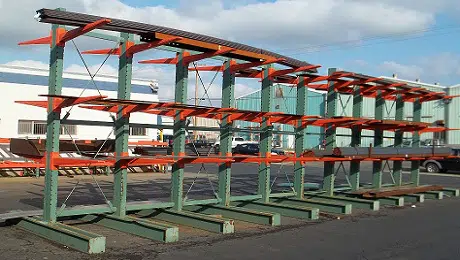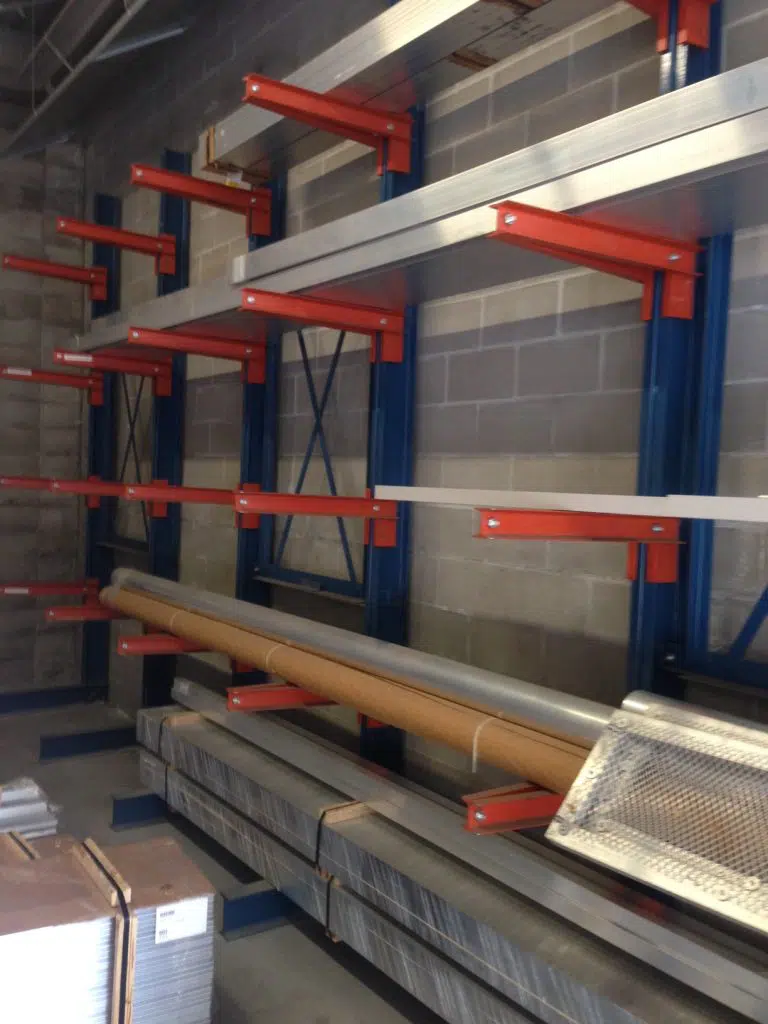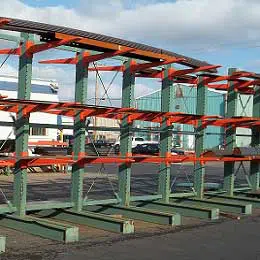When determining your cantilever racking weight capacity, one must consider many factors.
How to Determine Cantilever Rack Arm Weight Capacity
Let’s begin with speaking about the cantilever arms.

The load on your cantilever must be supported by enough arms to prevent deflection. To detect deflection, place the load over two wooden blocks. If the deflection is not present, it is acceptable to use a two-arm system as long as this does not create an overload condition.
The key is to remember that the load should overhang the end arms by one-half the distance from the upright centerline to the upright centerline. If you fail to achieve this, it can result in overload condition on the arms.
Each arm supports an equal amount of the load’s weight. Therefore, the required arm capacity can be determined by determining the number of arms per level and dividing it into the weight per level.
This practice will give you the needed arm capacity per level.

Cantilever Racking System Weight Capacity Examples
For example, the load is 5000# and will be supported by two arms then 5000# / 2 = 2500# per arm. Next, we need to determine the cantilever rack upright capacity. Start by multiplying the number of arms per side by the material on each arm.
For example – if there are three arm levels and the capacity in our example is 2500# per arm, then 2500# x 3 = 7500# upright capacity requirement. Any loads placed on the base are not included in the capacity requirement.
Two Things to Consider
It’s always important to remember two things when determining your cantilever rack weight capacity.
- First, total arm capacity must never exceed total upright capacity.
- Second, the load placed on the base does not diminish the rated capacity of the upright. It’s best to consistently put the heaviest product on the base of the rack.
If you need help with your application or want to speak with one of our experts, call 888-680-2256. Fill out a quote form today!

